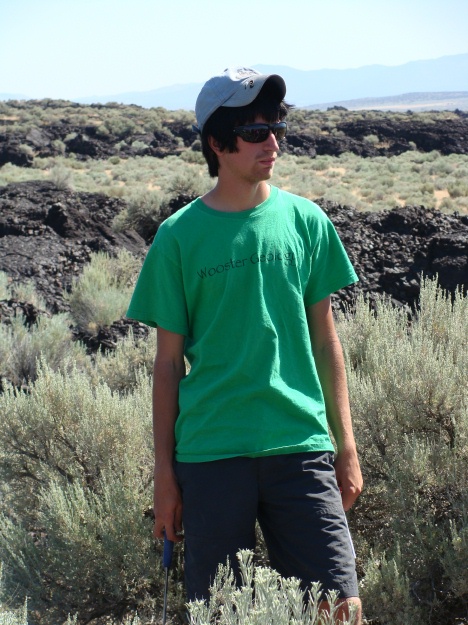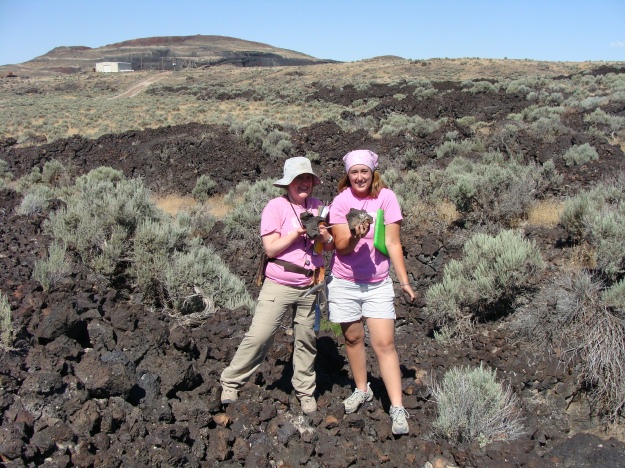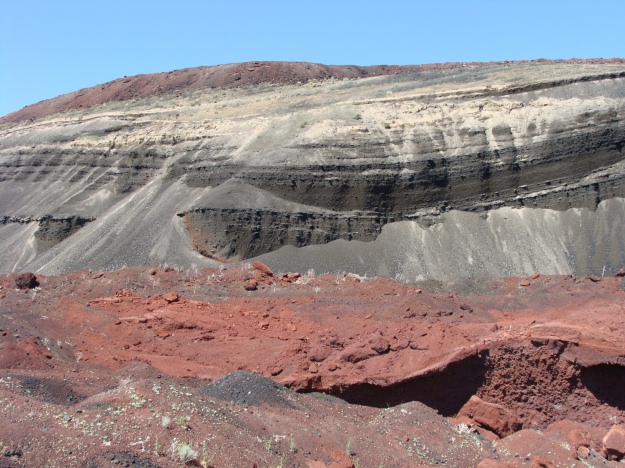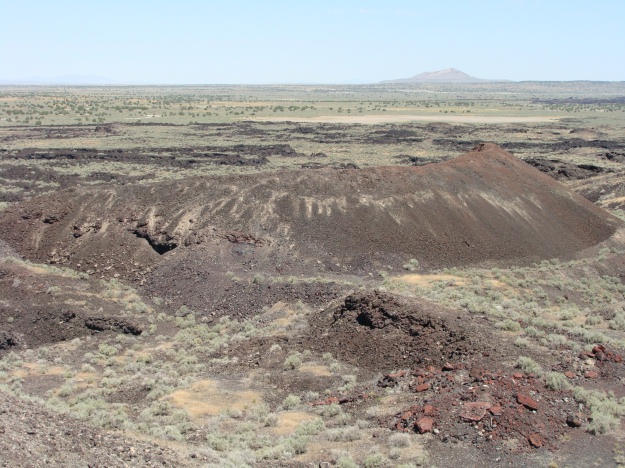After many successful field days in sedimentary strata, yesterday we had a day of exploration. We traveled with the Ohio State field camp to Fillmore, Utah, to investigate the Black Rock Desert. Specifically, we spent our time in the Ice Springs Volcanic Field, which provides the youngest volcanic activity in the Black Rock Desert (~600 years old).
We thought that the Icelandic Team would be especially interested in some of our photos, since basalt seems to be near and dear to their hearts.

Jesse Davenport, studious as ever, is listening intently to a lecture on the Ice Springs Volcanic Field. The rough, brecciated aa of the field is behind him.

Elyssa Krivicich (left, '09) and Elizabeth Deering (right) proudly display the Utah basalt. The Red Dome cinder cone is in the background. Hey Dr. Pollock and Becky Alcorn (our Icelandic Team)...do you like it?

This is a photo of a cross-section through the Red Dome cinder cone, which is quarried for landscaping purposes. Take a look at the pronounced bedding that is due to successive pulses of air-fall deposits. We collected volcanic blocks and bombs both at the base of the cinder cone and then at the very top.




The Black Rock Desert is so cool … but I simply must know why Elizabeth and Elyssa are wearing matching pink t-shirts!!
Love Love Love basalt! But guess what? We measured the orientation of dikes, elongated pillow lavas, and faults today! It’s like our worlds have reversed!
Pingback: Wooster Geologists » Blog Archive » Ancient shorelines
Pingback: Wooster Geologists » Blog Archive » Basalt from way, way down south